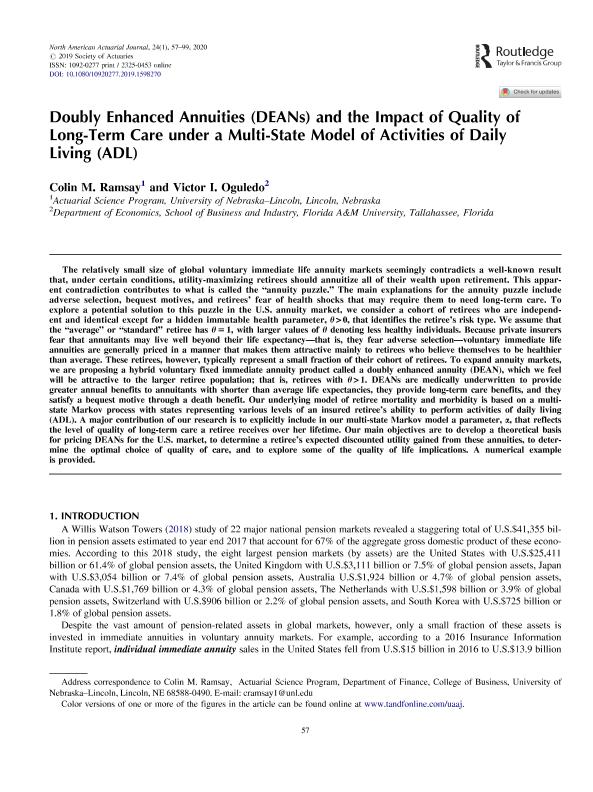Doubly Enhanced Annuities (DEANs) and the impact of quality of long-term care under a multi-state model of Activities of Daily Living (ADL)

Contenido multimedia no disponible por derechos de autor o por acceso restringido. Contacte con la institución para más información.

